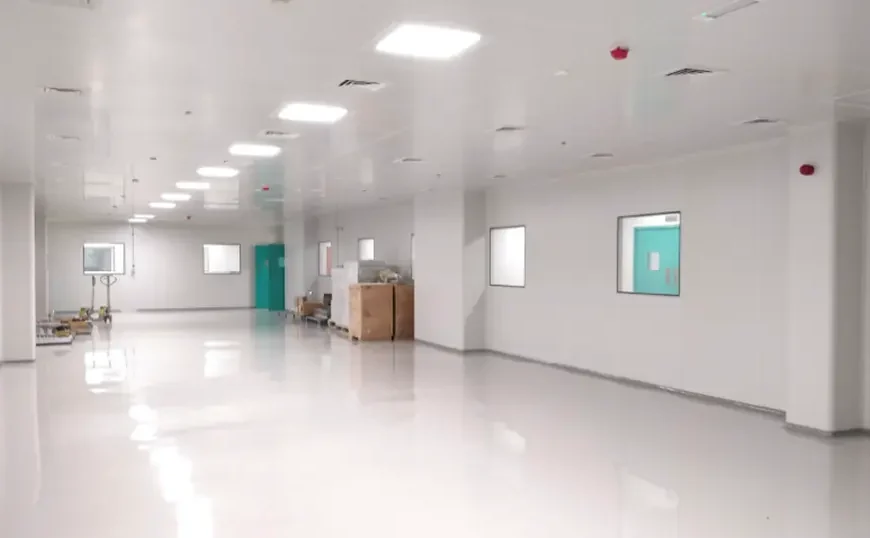In recent years, the cosmetic industry has experienced exponential growth, with a surge in demand for skincare, makeup, and personal care products. This increase in demand has necessitated a heightened focus on product quality and safety. One crucial aspect of ensuring these standards is the implementation of cleanrooms in cosmetic manufacturing. Cleanrooms are controlled environments designed to minimize contamination, providing a sterile setting for the production of sensitive products. In this blog, we will explore the importance of cleanrooms in the cosmetic industry, their benefits, and best practices for maintaining these environments.
Understanding Cleanrooms
Cleanrooms are specialized facilities that maintain extremely low levels of environmental pollutants such as dust, airborne microbes, and chemical vapours. They are classified based on the cleanliness of the air within them, using a system established by the International Organization for Standardization (ISO). For instance, ISO Class 5 cleanrooms have a maximum allowable particle count of 3,520 particles per cubic meter, making them suitable for the production of highly sensitive products.
In the cosmetic industry, cleanrooms are particularly vital for the manufacturing of products such as serums, creams, and makeup that require stringent quality control. These environments are designed to prevent contamination that could compromise product efficacy and safety, ensuring that consumers receive high-quality and reliable products.
Benefits of Cleanrooms in Cosmetic Manufacturing
Enhanced Product Quality
The primary benefit of cleanrooms is the assurance of product quality. By controlling particulate matter and microbial contamination, manufacturers can ensure that their products meet the required safety and efficacy standards. This is particularly important for products that come into direct contact with the skin, such as moisturizers and makeup. Cleanrooms help to eliminate variables that could lead to product spoilage or adverse reactions, enhancing consumer trust in the brand.
Regulatory Compliance
The cosmetic industry is subject to various regulations aimed at ensuring product safety. Many countries have established guidelines that require manufacturers to implement strict quality control measures. Cleanrooms facilitate compliance with these regulations by providing an environment where the risks of contamination are minimized. Brands that prioritize cleanroom protocols are better positioned to meet the expectations of regulatory bodies, avoiding potential fines and product recalls.
Increased Shelf Life
Contamination can significantly impact the shelf life of cosmetic products. Microbial growth, oxidation, and the introduction of foreign substances can lead to product degradation, affecting both safety and performance. Cleanrooms help to prolong shelf life by creating a controlled environment where these risks are mitigated. As a result, manufacturers can offer products with longer expiration dates, which is appealing to both retailers and consumers.
Innovation in Product Development
Cleanrooms not only safeguard existing products but also enable innovation. Many cosmetic brands are continuously developing new formulations and technologies to meet consumer demands. Cleanrooms provide a sterile space for research and development, allowing scientists to experiment with new ingredients and formulations without the risk of contamination. This fosters creativity and innovation within the industry, leading to the development of cutting-edge products.
Consumer Confidence
In an era where consumers are increasingly conscious of the ingredients in their cosmetics, brands that prioritize safety and quality stand out. The use of cleanrooms communicates a commitment to excellence and transparency. When consumers know that a brand invests in cleanroom technology, it builds confidence in the product’s safety and effectiveness. This trust can lead to increased brand loyalty and positive word-of-mouth, further driving sales.
Best Practices for Maintaining Cleanrooms
To maximize the benefits of cleanrooms, cosmetic manufacturers must adhere to best practices for their maintenance:
Regular Monitoring and Maintenance
Cleanrooms require continuous monitoring to ensure they remain within the specified standards. This includes regular testing of air quality, temperature, humidity, and particulate counts. Establishing a routine maintenance schedule helps to identify and rectify issues before they compromise product quality.
Employee Training
All personnel working in cleanrooms should receive comprehensive training on contamination control practices. This includes proper gowning procedures, hygiene protocols, and handling of materials. Empowering employees with knowledge ensures that everyone is committed to maintaining the integrity of the cleanroom environment.
Robust Quality Control Measures
Incorporating strict quality control measures throughout the manufacturing process is essential. This includes validation of processes, regular audits, and adherence to standard operating procedures (SOPs). Quality control should extend beyond the cleanroom to encompass the entire supply chain, from raw material sourcing to final product testing.
Investing in Technology
The integration of advanced technology, such as air filtration systems and monitoring sensors, can enhance cleanroom efficiency. Investing in automation can reduce human error and improve data accuracy, further ensuring product integrity.
Read Also: Best approaches to improve your English speaking skills
Conclusion
Cleanrooms play an indispensable role in the cosmetic industry, safeguarding product quality, ensuring regulatory compliance, and fostering innovation. As consumers continue to demand higher standards for the products they use, the importance of cleanroom technology will only increase. By prioritizing cleanroom practices, cosmetic manufacturers can not only protect their products but also build a reputation for quality and reliability that resonates with consumers. As the industry evolves, embracing cleanroom standards will be crucial for those seeking to thrive in this competitive landscape.









